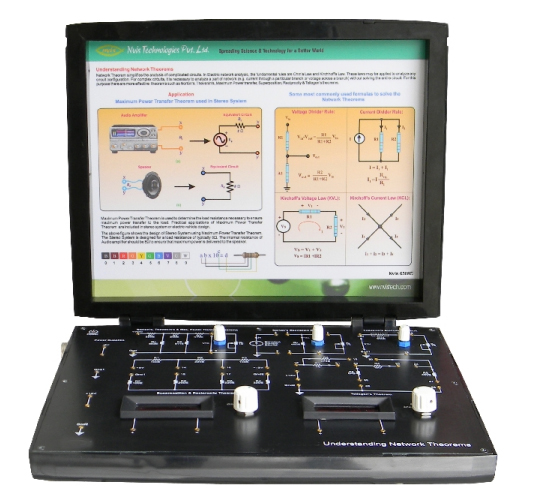It is a useful product for students to study and verify Norton’s, Thevenin’s, Maximum Power Transfer, Superposition, Reciprocity and Tellegen’s Theorems. This product explains corresponding theorems in very easy way, Tellegen’s theorem is explained in individual block and Norton’s, Thevenin’s and Maximum Power Transfer Theorems are explained in a single circuit so that student can compare these theorems with each other. Superposition and Reciprocity theorems are also explained in a single circuit. The product is designed and presented in such a way that student can easily measure all the electrical parameters like voltage, current and resistance.
Product Features
- Exclusive and compact design
- In-built power supply
- Constant current source
- On board Voltmeter & Ammeter
- Straight forward representation of all theorems
- On board equivalent circuits
- Potentiometer is provided to vary load resistance
- Online Product Tutorial
Technical Specifications
Mains power supply : 90 – 270V ±10%, 50Hz
DC power supply : +5V, Regulated
+12V, Regulated
Constant Current Source : 3.2 mA
Voltmeter Range : 200mV to 20V
Ammeter Range : 200µA to 200mA
Dimensions (mm) : W 350 x D 280 x H 55
Optional
Multimeter Scientech ’50/51′
Scope of Learning
Study and verification of Norton’s theorem
Study and verification of Thevenin’s Theorem
Study and verification of Maximum Power Transfer Theorem
Study and verification of Superposition theorem
Study and verification of Reciprocity theorem
Study and verification of Tellegen’s Theorem

